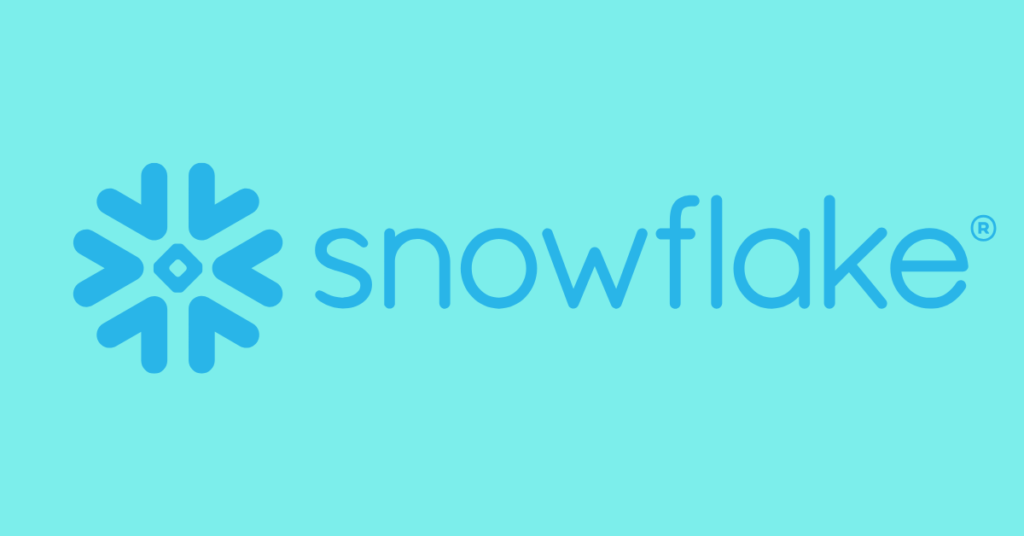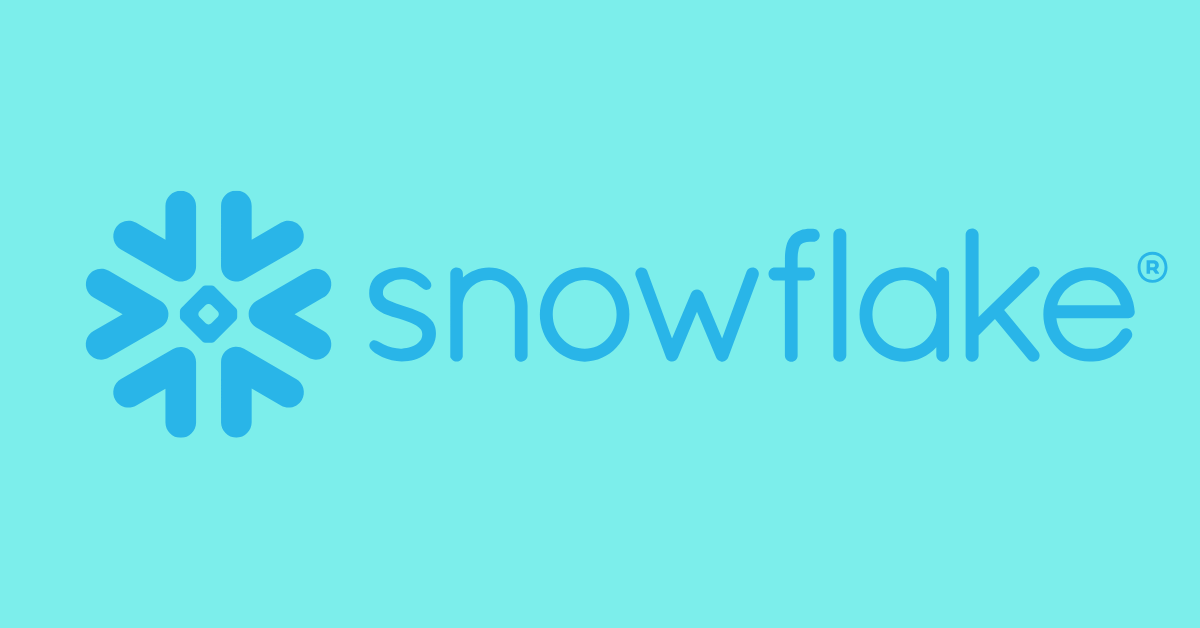So, you’ve landed an interview with Snowflake? Congratulations! You’re already on the path to joining one of the most innovative companies in the data cloud space. Whether you’re a seasoned data professional or fresh to the field, this comprehensive guide will help you navigate the Snowflake interview process with confidence.
Why is preparation crucial for a Snowflake interview? Well, think of it like preparing for a mountain climb – you wouldn’t start without the right equipment and knowledge of the terrain. In the same way, understanding what lies ahead and equipping yourself with the right preparation tools can make the difference between stumbling and striding confidently through your interview.
In this guide, you’ll discover:
- A detailed breakdown of each interview stage
- Expert tips for technical and behavioral questions
- Strategic approaches to showcase your skills
- Real-world scenarios you might encounter

Introduction to Snowflake
What is Snowflake?
Snowflake is a revolutionary cloud-based data warehousing platform designed to handle the demands of modern data management. Built on top of leading cloud infrastructures like AWS, Microsoft Azure, and Google Cloud, Snowflake offers unparalleled scalability, flexibility, and performance. It serves as a centralized hub for various data-related activities, including data lakes, data engineering, data application development, data science, and secure sharing and consumption of real-time and shared data.
What sets Snowflake apart is its ability to scale compute and storage independently, allowing organizations to optimize costs and performance based on their specific needs. This flexibility makes it an ideal choice for businesses looking to manage large volumes of data efficiently. Additionally, Snowflake’s architecture supports seamless data sharing, enabling organizations to collaborate and share data securely across different Snowflake accounts.
In essence, Snowflake is not just a data warehouse; it’s a comprehensive data platform that empowers organizations to harness the full potential of their data, driving insights and innovation.

Understanding the Snowflake Interview Process
Let’s pull back the curtain on what you can expect during your Snowflake interview journey. Breaking down the process into manageable chunks makes it less daunting and helps you focus your preparation efforts.
Application Submission: Making That First Impression Count
Your journey begins with the application, and yes, the details matter more than you might think. Snowflake’s recruiters aren’t just looking for keywords – they’re seeking candidates who understand the company’s mission of mobilizing the world’s data.
Here’s how to optimize your application:
Resume Tips:
- Highlight cloud data warehouse experience
- Quantify your achievements (e.g., “Improved query performance by 40%”)
- Showcase relevant certifications (AWS, Azure, Snowflake)
- Use Snowflake-specific terminology appropriately
Cover Letter Strategy:
- Connect your experience to Snowflake’s values
- Demonstrate your understanding of data cloud technology
- Share a brief, compelling story about your data journey
- Express genuine enthusiasm for Snowflake’s mission
💡 Pro Tip: Review Snowflake’s job description thoroughly and mirror key terms in your application – but keep it natural and honest!
Initial Screening: Acing the First Conversation
Think of the initial screening as a warm-up lap – it sets the tone for everything that follows. This usually takes the form of a 30-45 minute phone or video call with a recruiter.
What recruiters are really looking for:
- Cultural alignment with Snowflake’s values
- Basic technical understanding
- Communication skills
- Genuine interest in the role
During this stage, you might be asked questions like:
- “What interests you about working at Snowflake?”
- “Can you walk me through your background with data warehousing?”
- “What’s your experience with cloud technologies?”
How to stand out: Come prepared with concise stories that demonstrate your experience. Remember STAR (Situation, Task, Action, Result), but keep it brief at this stage – you’ll have time to elaborate later.
Technical Assessment: Showing What You Know
Now we’re getting to the meat of the process. Snowflake’s technical assessment varies by role but typically focuses on four core areas:
SQL Proficiency
- Complex queries
- Performance optimization
- Data modeling concepts
Data Warehousing Fundamentals
- Architecture understanding
- ETL processes
- Data security principles
Cloud Computing Concepts
- Multi-cloud architecture
- Scalability
- Resource management
Data Loading
- Executing SQL commands
- Managing database objects
- Optimizing file sizes and formats
- Parallel processing
- Automated processes and real-time data ingestion using Snowpipe
🎯 Key Focus Areas:
- Practice writing efficient SQL queries
- Review Snowflake’s unique architectural features
- Understand cloud data warehouse best practices
The Interview Rounds: Bringing It All Together
The final stages typically involve multiple rounds of interviews, either onsite or virtual. Here’s what to expect:
Technical Rounds
- In-depth technical discussions – Expect detailed questions about your past projects and the specific technologies you’ve worked with. Be prepared to explain your technical decisions and their impact on project outcomes.
- Problem-solving exercises – You’ll likely face coding challenges or algorithmic problems to solve in real-time. Focus on explaining your thought process clearly while working through the solution.
- Architecture design questions – Be ready to whiteboard system designs and explain scalability considerations. You should be able to discuss trade-offs between different architectural approaches.
Team Fit Discussions
- Collaboration scenarios – You’ll be presented with hypothetical team situations and asked how you would handle conflicts or disagreements. Share specific examples from your experience working in teams.
- Project management approach – Questions will explore how you prioritize tasks and manage deadlines. Be prepared to discuss your experience with different project management methodologies.
- Communication style assessment – Interviewers will evaluate how you explain complex concepts and handle feedback. They may present scenarios to test your ability to communicate with different stakeholders.
Leadership Conversations
- Vision alignment – You’ll discuss your long-term career goals and how they align with the company’s mission. Be ready to share your perspective on industry trends and future directions.
- Strategic thinking – Expect questions about how you’ve influenced product or technical decisions in past roles. Share examples of times you’ve identified and solved strategic challenges.
- Growth potential – Be prepared to discuss how you’ve helped develop other team members and your approach to continuous learning. They’ll want to understand your leadership style and mentoring experience.
Time Frame: Expect the entire process to take 2-4 weeks, though this can vary based on the role and circumstances.

Essential Snowflake Interview Questions and Answers
Let’s dive into the questions you’re most likely to encounter and how to craft compelling answers that showcase your expertise.
Fundamental Concepts
Q: “What is Snowflake, and how does it differ from traditional data warehouses in handling semi structured data?”
A strong answer would include:
- Snowflake’s unique separation of storage and compute
- Cloud-native architecture benefits
- Multi-cluster shared data architecture
- Pay-for-what-you-use model
Here’s a framework for your response: “Snowflake revolutionizes data warehousing by separating compute, storage, and services layers. Unlike traditional warehouses where these are tightly coupled, Snowflake’s architecture allows for independent scaling of each layer. This means you can scale compute resources up or down without affecting storage, leading to better cost efficiency and performance. For example, you might have a heavy analytics workload during business hours but minimal needs overnight – Snowflake lets you adjust accordingly.”
Q: “Can you explain Snowflake’s architecture?”
Break it down into three key layers:
- Database Storage Layer
- Compressed columnar storage, including the ability to handle semi-structured data such as JSON and XML
- Micro-partitioning to efficiently store data and manage both data and metadata
- Data protection features
- Query Processing Layer
- Virtual warehouses
- Independent scaling
- Resource isolation
- Cloud Services Layer
- Authentication
- Infrastructure management
- Query optimization
Advanced Technical Questions
Q: “How does Snowflake handle data security, compliance, and secure data sharing?”
Frame your answer around these key points:
- End-to-end encryption
- Role-based access control
- Always-on security features
- Compliance certifications
Q: “What are micro-partitions in Snowflake, and how do they enhance performance?”
- Define micro-partitions (immutable files containing 50-500MB of compressed data)
- Explain automatic partitioning
- Discuss metadata advantages
Snowflake’s metadata services provide significant advantages, such as enabling efficient query optimization and reducing the need for manual indexing. Additionally, Snowflake’s Time Travel feature allows users to access historical data efficiently, which is crucial for recovering accidentally modified or deleted data and conducting audits.
- Share performance benefits
- Micro-partitions facilitate the retrieval of historical data for audits and recovery. This is particularly useful in scenarios where data integrity is paramount, and human errors need to be minimized.
Remember to use real-world examples when possible: “I once worked on a project where proper understanding of micro-partitioning helped us reduce query times by 60% by optimizing our clustering keys…”
Scenario-Based Questions
These questions test your practical experience and problem-solving abilities. Let’s look at a common example:
Q: “How would you design a data pipeline using Snowflake for real-time analytics?”
Approach this step-by-step:
- Discuss data ingestion options (Snowpipe, external stages). Snowpipe can be used to load data continuously, providing efficient and real-time data ingestion. This method allows for quick access to data by loading it in micro-batches, ensuring that the data is always up-to-date.
- Explain transformation strategy. Efficiently loading data using methods like COPY INTO and INSERT INTO commands is crucial. These techniques help optimize data workflows and ensure that data is ingested and managed effectively within Snowflake tables.
- Address real-time considerations.
- Mention monitoring and maintenance.
Remember: The best answers combine technical accuracy with practical experience. Don’t just explain what you’d do – explain why you’d do it that way and what potential challenges you’d anticipate.

Snowflake Architecture and Data Management
Overview of Snowflake Architecture
Snowflake’s architecture is a sophisticated blend of shared-disk and shared-nothing database architectures, designed to leverage the strengths of both. This hybrid approach ensures that Snowflake can deliver high performance, scalability, and flexibility, making it a powerful tool for modern data management.
The architecture is composed of three main layers:
- Database Storage Layer: This layer is responsible for storing data in a compressed, columnar format. Data is automatically organized into micro-partitions, which are optimized for efficient querying and storage. The storage layer is designed to be highly scalable, allowing for the seamless expansion of data storage as needed.
- Query Processing Layer: Also known as the compute layer, this consists of virtual warehouses that handle query execution. Each virtual warehouse operates independently, allowing for the isolation of workloads and the ability to scale compute resources up or down based on demand. This ensures that query performance remains high, even as data volumes grow.
- Cloud Services Layer: This layer manages the overall infrastructure, including authentication, metadata management, and query optimization. It acts as the brain of the Snowflake platform, coordinating activities across the storage and compute layers to ensure efficient and secure data processing.
Data Storage in Snowflake Cloud Data Warehouse
In Snowflake, data storage is designed to be both efficient and secure. Data is stored in a compressed, columnar format, which allows for rapid querying and analysis. The data is automatically organized into micro-partitions, which are small, immutable files that contain between 50 and 500MB of compressed data. These micro-partitions are optimized for performance, enabling fast access to the data stored within them.
One of the standout features of Snowflake’s data storage is its ability to support secure data sharing. Organizations can share data quickly and securely between different Snowflake accounts, facilitating collaboration and data-driven decision-making. This is particularly useful for businesses that need to share sensitive data with partners or clients while maintaining strict security controls.
Additionally, Snowflake’s data storage is built on top of cloud storage services provided by AWS, Microsoft Azure, and Google Cloud. This ensures that data is stored in a highly available and durable environment, with built-in redundancy and disaster recovery capabilities.
Overall, Snowflake’s data storage architecture is designed to provide a robust, scalable, and secure foundation for modern data management, enabling organizations to store, query, and share their data with ease.

Mastering the Behavioral Interview
Ever wonder why technical powerhouses like Snowflake put such emphasis on behavioral questions? It’s simple – they’re looking for problem-solvers who can navigate real-world challenges while working effectively with teams. Let’s break down the key areas and how to shine in each one.
Leadership and Teamwork Scenarios
Q: “Tell me about a time when you led a complex data migration project.”
Here’s your chance to showcase your project management chops! Follow this structure:
- Situation: “We needed to migrate 10TB of critical customer data to Snowflake…”
- Task: “My role was to lead the migration while ensuring zero data loss…”
- Action: “I created a detailed migration plan, including…”
- Result: “Successfully migrated with 99.99% accuracy and no downtime…”
💡 Pro Tip: Keep a “victory file” of your achievements. It’s much easier to recall specific details when they’re documented!
Problem-Solving Under Pressure
When facing questions about handling technical challenges, remember this golden rule: focus on your process, not just the outcome.
Q: “Share an experience where you improved query performance significantly.”
A compelling response might be: “I noticed our marketing analytics dashboard was taking over 2 minutes to load. Instead of jumping straight to optimization, I:
- Established performance benchmarks
- Used EXPLAIN PLAN to identify bottlenecks
- Implemented materialized views and clustering
- Reduced load time to 10 seconds”
Communication and Stakeholder Management
Here’s where many technical candidates stumble – but not you! Think about times when you’ve bridged the gap between technical and business stakeholders.
Real-world scenario: “How do you explain complex Snowflake features to non-technical stakeholders?”
Your approach should demonstrate:
- Ability to translate technical concepts into business value
- Use of analogies and visual aids
- Active listening and feedback incorporation
- Patience and adaptability

Remote Interview Success Strategies
Welcome to the virtual stage! Remote interviews have their own unique challenges and opportunities. Let’s make sure you’re set up for success.
Creating Your Virtual Interview Environment
Your Technical Command Center:
- Primary and backup internet connections
- Professional background (think clean and uncluttered)
- Proper lighting (facing you, not behind you)
- High-quality microphone and camera
- Multiple monitors (if possible)
🚨 Emergency Checklist:
- Backup hotspot ready
- Phone charged for audio fallback
- Technical contact number handy
- Local copy of presentation materials
Mastering Virtual Communication
Body Language 2.0:
- Look directly at the camera when speaking (it’s the new eye contact!)
- Sit slightly further back than you think you should
- Use hand gestures deliberately and keep them in frame
- Maintain good posture – no slouching!
Voice and Presence:
- Speak 10% slower than usual
- Pause deliberately between points
- Use verbal acknowledgments (“I see,” “That’s a great point”)
- Practice active listening cues that work on video
Technical Demonstration Success
When it’s time to show your Snowflake expertise:
- Before the Demo:
- Test screen sharing
- Prepare backup code snippets
- Close unnecessary applications
- Have documentation links ready
- During the Demo:
- Narrate your actions
- Keep your cursor visible
- Use clear file/variable names
- Handle errors gracefully

Strategic Interview Preparation
Let’s put all the pieces together with a focused preparation strategy that will set you apart from other candidates.
Research That Makes a Difference
Go beyond the basics! Here’s your deep-dive checklist:
Company Intelligence:
- Recent Snowflake partnerships
- Quarterly earnings reports
- Technical blog posts
- Community contributions
Role-Specific Prep:
- Study the job description like it’s your favorite book
- Map your experience to key requirements
- Prepare questions that show strategic thinking
- Research your interviewers (LinkedIn is your friend!)
Crafting Your Questions
Remember: Questions aren’t just for the end of the interview! Use them strategically throughout to demonstrate engagement and insight.
Strong Questions Examples:
- “How does your team handle the balance between query performance and cost optimization?”
- “What’s your approach to maintaining data quality as scale increases?”
- “Can you tell me about a challenging project your team recently completed?”
✨ Power Move: Connect your questions to recent Snowflake announcements or features: “I noticed Snowflake recently announced
Bringing It All Together: Your Pre-Interview Checklist
Before we wrap up, let’s create your personalized roadmap for interview success. Think of this as your pre-flight checklist – every item matters!
One Week Before
- Technical Preparation
- Review all Snowflake core concepts
- Practice writing complex SQL queries
- Run through common scenario responses
- Test your remote setup thoroughly
- Company Research
- Study recent Snowflake news and releases
- Review the company’s technical blog posts
- Understand current market position
- Research your interviewing team
Day Before
Technical Setup
- Test internet connection
- Update software
- Prepare backup devices
- Set up quiet space
Mental Preparation
- Review your success stories
- Organize your STAR examples
- Practice relaxation techniques
- Get a good night’s sleep
Interview Day
Final Preparations
- Join calls 5-10 minutes early
- Have water nearby
- Keep notes handy but not obvious
- Smile and show enthusiasm!
Key Takeaways to Remember
Let’s distill everything we’ve covered into actionable insights:
- Technical Excellence Matters, But… Remember that Snowflake isn’t just hiring for technical skills – they’re investing in future team members who can grow with the company.
- Show Your Learning Mindset The data world evolves rapidly, and Snowflake leads many of these changes. Demonstrate your ability to learn and adapt.
- Connect Theory with Practice Don’t just memorize answers; understand the ‘why’ behind Snowflake’s architecture and features. Your practical experience matters!
- Communication is Key Whether explaining complex concepts or handling technical difficulties, clear communication will set you apart.
The Path Forward
Think of your Snowflake interview not as a test, but as an opportunity to showcase how you can contribute to the future of data cloud technology. You’ve prepared thoroughly, you understand the landscape, and you’re ready to demonstrate your value.

Final Words of Encouragement
Interviewing at Snowflake isn’t just about landing a job – it’s about joining a community that’s transforming how the world works with data. Your preparation shows respect for that mission and enthusiasm for being part of it.
Remember: Every expert at Snowflake was once in your position, preparing for their interview. They’re not looking for perfection – they’re looking for potential, passion, and the right mixture of technical ability and collaborative spirit.
The Bottom Line
You’ve now got a comprehensive roadmap for your Snowflake interview success. Remember that preparation builds confidence, and confidence shines through in interviews. Trust in your preparation, be authentic in your responses, and approach the interview as a chance to have meaningful technical discussions with potential future colleagues.
Good luck! The data cloud awaits your expertise.



